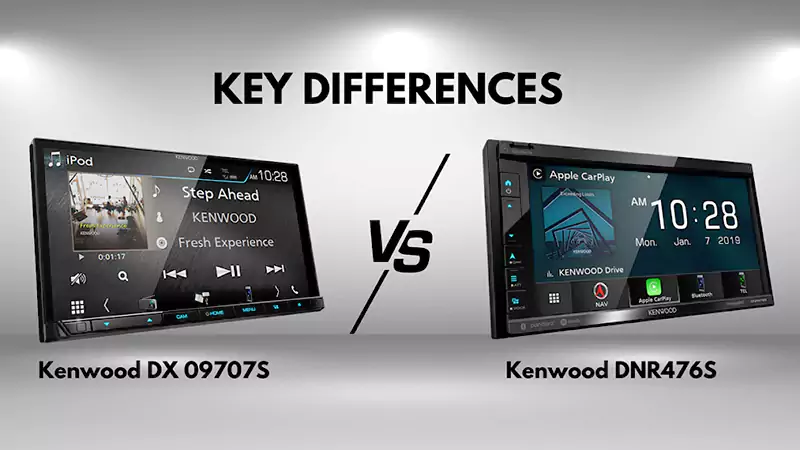Why Acrylic Printing is the Future of Fine Art Reproduction
The benefits of acrylic printing over more conventional printing processes have led to the technology’s rapid adoption in the visual arts community. Reproducing a picture directly onto a thick acrylic sheet creates a durable, high-resolution copy of the original.
Acrylic printing has advantages over other technologies like lithograph and giclee in terms of image quality, durability, and endurance. The copying process is environmentally benign since it uses non-toxic, water-based inks to reproduce artwork.
The adaptability of acrylic printing as a display medium is a further benefit. Mounting acrylic sheets is flexible; they may be shown independently, in frames, or as components of more elaborate arrangements. Large-format copying on those sheets also allows for the production of eye-catching, attention-grabbing statements.
Acrylic printing is suitable for presenting talents in public settings because of its low maintenance requirements. Collectors and craft lovers who wish to show their artwork for decades will find its prints a good purchase because of its durability and permanence.
In this article, we’ll delve deeper into the benefits of acrylic printing, including its high-end appearance, large-format capabilities, display flexibility, simple upkeep, lesser cost, and minimum environmental impact. We’ll also talk about how it is changing the face of fine craft reproduction and why it’s the industry’s future.
| Interesting Fact: Acrylic prints have a higher vibrancy and clarity than Giclee prints. Giclee prints have a more traditional look but are not as resistant to damage and fading as acrylic prints. |
Superior Image Quality
The printed acrylic images are far higher quality than those printed on paper or other materials. Colors are more vivid, and details are sharpened by copying directly onto a sheet. Acrylic printing differs from conventional processes since the ink is incorporated into its sheet rather than sitting on the substrate. This leads to more accurate color reproduction and a broader spectrum of tones, making the artwork seem more realistic.
The increased degree of detail available with acrylic printing makes it an excellent medium for reproducing fine art. Detailing such as brush strokes and thin lines may be faithfully reproduced in printed works. This allows for the creation of copies of such high quality that they are difficult to tell apart from the originals.
In addition, the three-dimensional aspect created by this copying makes the craft look more realistic. There are various step-by-step guides for acrylic painting available on the internet for beginners. The picture leaps off the acrylic sheet because the material reflects light. This is a great way to exhibit excellent art since it draws the viewer’s attention and emphasizes the aesthetic appeal of the piece.
Durability and Longevity
Printing on acrylic has very high longevity. Because the sheet used in the process is scratch- and UV-resistant, the craft will look great for years to come. It prevents the ink from cracking or fading over time, unlike other procedures. This implies that the artwork is a good investment for collectors and fans since it will retain its color and brilliance for longer.
In addition, acrylic printing lasts longer without deteriorating like other processes. If the sheet is dropped or bumped accidentally, it is less likely to fracture or shatter. This makes it a more secure choice for public art exhibitions in museums and galleries.
| Insightful Stats: The acrylic paint market is enhancing at an applauding rate and is believed to record a CAGR of 4.5% from 2022 to 2032. The primary reason is that they are known for durability, flexibility, and affordability. Currently, real estate companies are choosing them to differentiate themselves in the market. |
High-End Appearance
Printing on acrylic provides a professional look that can’t be achieved with any other process. The final product has a glossy sheen that gives the illusion of depth. The artwork comes to life because of the vivid colors used. Its professional look makes it an excellent choice for showcasing crafts in institutions like museums and galleries.
Acrylic printing’s glossy sheen also lends a contemporary air to the pieces. Therefore, it is a fantastic choice for exhibiting talent in current settings, such as homes and businesses. Its professional sheen makes the painting more valuable and appealing to collectors and craft lovers.
| Do You Know: These acrylic paints are affordable and less expensive than traditional oil paintings. They easily attract buyers and are a great option for sales. |
Large-format printing
Large-format printing is possible with acrylic, making it a good alternative for visual artists and photographers who wish to simultaneously produce several copies of their work. Copying craft considerably bigger than usual using large-format printing makes for a more impressive and eye-catching presentation.
Compared to other reproducing technologies, large-format printing with it provides greater detail and color fidelity. Acrylic printing uses cutting-edge technology, so even the most intricate designs may be accurately reproduced in stunning pieces. Even when blown up to enormous proportions, the vivid colors and crisp details remain intact, making this an excellent choice for photographers and artists seeking to make a grand statement.
The adaptability of displays is another benefit of such printing on acrylic. Its prints in large sizes are versatile since they may be hung on the wall or shown on a stand or frame. Because of its adaptability to a variety of settings, big acrylic prints have several potential applications, including but not limited to wall crafts, business signs, and trade shows
Versatility in Displaying
Reproducing works of art using it has a low environmental impact. This is because its printing produces less waste, and most of its components may be recycled. There are more than 14 techniques for beginners to try.
Acrylic printing has several advantages over other processes, the first being its reduced impact on the environment compared to techniques like lithography and screen copying. It uses water-based inks and generates relatively little waste, while conventional printing procedures often use chemicals and solvents that may be hazardous to the environment.
In addition, you may reuse the respective printing sheets once they’ve been used once. The printing technique has less of an effect on the environment since acrylic is a plastic that can be recycled and reused. Because of this, acrylic is a green choice for artists and craft lovers concerned about their carbon footprint.
The long lifespan of its displays is another way they benefit the environment. Because of their durability and resistance to fading, acrylic prints may be proudly exhibited for extended periods without ever having to be replaced. This lessens the frequency with which printing is required and reduces paper waste.
Easy to Clean and Maintain
Acrylic printing has several benefits, including its low maintenance requirements. Its material is smooth, non-porous surface is impervious to dirt, dust, and grime, so it’s easy to keep acrylic prints looking new.
You only need a gentle cleaning solution and a soft, lint-free cloth to clean an acrylic print. Scratching or damaging the print’s surface may occur if using abrasive or aggressive cleaners. To clean the print, just wash it down with a soft towel, being careful not to rub it too hard or use anything too abrasive that might harm the surface.
They are long-lasting and can withstand heavy foot traffic and direct sunlight. Because of the superior printing method, It will not fade or lose detail over time.
They are an excellent alternative for high-traffic public spaces like hotels, restaurants, and workplaces since they are long-lasting and straightforward to clean. The copies must be durable enough to endure the heavy foot traffic they may experience in these settings. Acrylic prints are perfect for these environments since their smooth surface can be readily wiped clean to maintain a pristine appearance.
They are an excellent option for artists and photographers who want to sell high-quality copies of their work that buyers won’t have to worry about damaging. Plus, they are a perfect option for people who want their artwork to retain its luster over time because of its resistance to fading, UV damage, dirt, and grime.
Cost-Effective
Reproducing works of art in acrylic is a more budget-friendly choice. Compared to other printing processes like giclee printing or lithography, the cost of this approach is far lower. It’s a completely newer technique that is continually evolving and improving. This method, however, has already been shown to be a very economical way to reproduce works of art.
It saves money in part because it requires nothing in the way of specialized tools or supplies. Traditional printing processes may need specialized printing presses or various printing materials, whereas it requires a regular printer and acrylic sheets. Because of this, it might be a viable choice for artists who need access to expensive or specialist tools.
It is also quite effective, enabling high-quality artwork’s simple and rapid reproduction. This allows artists to quickly reproduce many copies of their work without incurring huge costs for printing supplies and machinery. This is helpful for artists who wish to make money off prints of their work and institutions and galleries who need to make several copies of a piece for the exhibition.
Eco-Friendly
Reproducing works of art using acrylic printing has a low environmental impact. This is because it produces less waste, and most components may be recycled.
It has several advantages over other printing processes, the first being its reduced impact on the environment compared to techniques like lithography and screen printing. It uses water-based inks and generates relatively little waste, while conventional printing procedures often use chemicals and solvents that may be hazardous to the environment.
In addition, you may reuse the sheets once they’ve been used once. The printing technique has less of an effect on the environment since it is a plastic that can be recycled and reused. Because of this, printing is a green choice for artists and craft lovers concerned about their carbon footprint.
The long lifespan of printed acrylic displays is another way they benefit the environment. Because of their durability and resistance to fading, they may be proudly exhibited for extended periods without ever having to be replaced.
Conclusion
Acrylic printing is the best method for reproducing fine art because of its outstanding picture quality, longevity, high-end aesthetic, large-format printing capabilities, display flexibility, low maintenance requirements, low cost, and environmental impact. Because of its durability, versatility, and little effect on the environment, acrylic printing is a popular choice among art collectors and admirers who want to showcase their prized possessions. Acrylic printing is a flexible and functional option for displaying artwork in various settings, including galleries, museums, private homes, and commercial spaces.









